Frost Protection - UTL Repository
Frost Protection - UTL Repository
Frost Protection - UTL Repository
Create successful ePaper yourself
Turn your PDF publications into a flip-book with our unique Google optimized e-Paper software.
]<br />
F R O S T P R O T E C T I O N : F U N D A M E N T A L S , P R A C T I C E A N D E C O N O M I C S<br />
[<br />
When electric wind machines are installed, the grower is commonly required<br />
to pay the power company “standby” charges, which cover the cost of line<br />
installation and maintenance. The standby charges are paid whether the wind<br />
machines are used or not. Internal combustion wind machines are more costeffective,<br />
but they require more labour. Wind machine noise is a big problem for<br />
growers with crops near cities and towns, and this should be considered when<br />
selecting a frost protection method. Generally, one large wind machine with a 65<br />
to 75 kW power source is needed for each 4.0 to 4.5 ha. The effect on<br />
temperature decreases approximately as the inverse square of the distance from<br />
the tower, so some overlap of protection areas will enhance protection.<br />
Wind machines generally consist of a steel tower with a large rotating twoblade<br />
fan (3 to 6 m diameter) near the top, mounted on an axis tilted about 7°<br />
downward from the horizontal in the tower direction. Typically, the height for<br />
fans is about 10–11 m, and they rotate at about 590–600 rpm. There are also<br />
wind machines with four-blade fans. When a fan operates, it draws air from aloft<br />
and pushes it at a slightly downward angle towards the tower and the ground.<br />
The fan also blows cold air near the surface upwards and the warm air above and<br />
cold air below are mixed. At the same time that the fan is operating, it rotates<br />
around the tower with about one revolution every three to five minutes. The<br />
amount of protection afforded depends on the unprotected inversion strength.<br />
In general, the temperature increase at 2.0 m height resulting from the fans is<br />
about 30 percent of the inversion strength between 2 m and 10 m height in an<br />
unprotected crop. Wind machines are typically started when the air temperature<br />
reaches about 0 °C. Wind machines are not recommended when there is a wind<br />
of more than about 2.5 m s -1 (8 km h -1 ) or when there is supercooled fog, which<br />
can cause severe fan damage if the blades ice up.<br />
Fans that vertically pull down warm air from aloft have generally been<br />
ineffective and they can damage plants near the tower. Wind machines that blow<br />
vertically upwards are commercially available and there has been some testing of<br />
the machines. However, there were no published research reports found when<br />
preparing this book.<br />
Helicopters<br />
Helicopters move warm air from aloft in a temperature inversion to the colder<br />
surface. The area covered by a single helicopter depends on the helicopter size<br />
and weight and on the weather conditions. Estimated coverage area by a single<br />
helicopter varies between 22 and 44 ha. Recommendations on pass frequency<br />
vary between 30 to 60 minutes, depending on weather conditions. Waiting too<br />
28


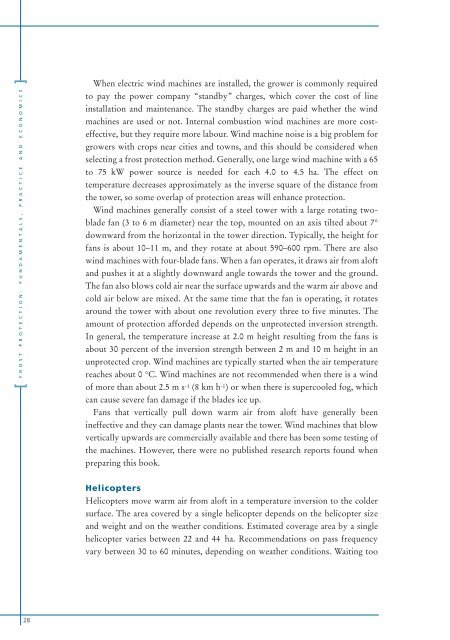
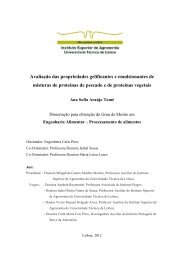
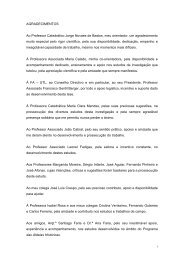
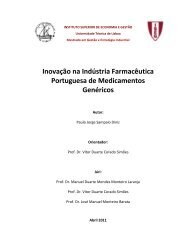
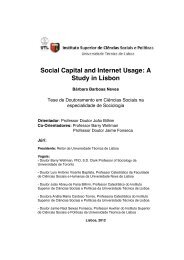
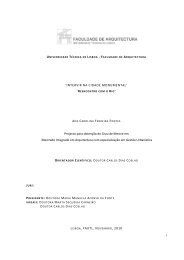
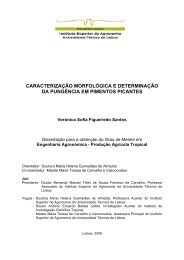

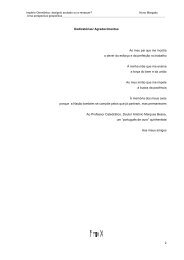

![Tese - Es..[1].pdf - UTL Repository - Universidade Técnica de Lisboa](https://img.yumpu.com/25707135/1/184x260/tese-es1pdf-utl-repository-universidade-taccnica-de-lisboa.jpg?quality=85)


